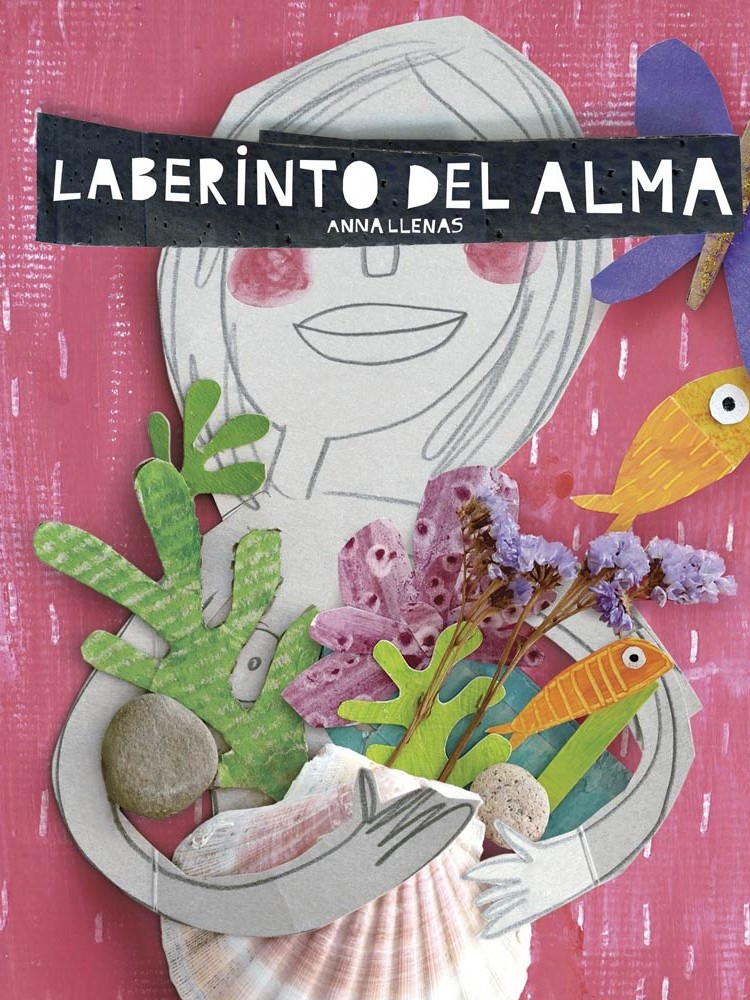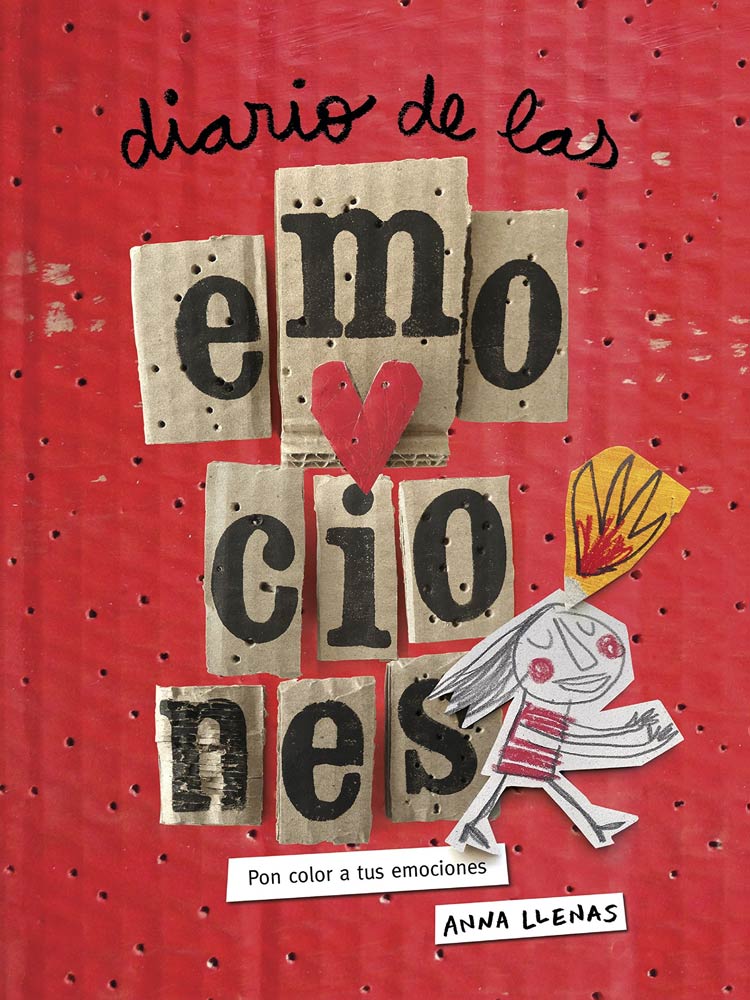Why is it important to identify and express emotions properly?
Emotions provide important information about what is happening around us, how external events affect us and what they mean to us. Emotions also inform about the impact of internal events such as thoughts or physiological responses. Therefore, emotional responses to external or internal events are guides to our behavior, set us to behave in one way or another, tell us what to do depending on the emotion we are feeling.
If we do not know how to properly identify the emotions we feel, it is very likely that we will have difficulty managing our feelings, reflecting on why we feel the way we do and what we need to do to change our emotional state. Therefore, it is very important that we know how to identify emotions properly and to observe to which thoughts they are related to, so that we can make decisions to manage our emotions and respond to the situation we are facing.
The skills to identify and express emotions need to be fostered in childhood so that children develop an emotional system that allows them to manage and handle emotions properly. However, sometimes, these skills have not been adequately developed during this stage of life and we see adults with difficulties in identifying, expressing and managing their emotions. Sometimes, people with these difficulties can only determine if they feel "good", "so so" or "bad", but they do not know how to identify exactly what emotion they are feeling. At other times, they are able to differentiate between basic emotions (such as joy, sadness, fear, anger, disgust, and surprise), but have difficulty being more specific with more complex emotional states.
Below are some tools and resources that can be helpful in developing the skills to identify and express emotions. All of them can be used with adults, and some of them, with children, depending on their level of emotional development.
Circle of emotions
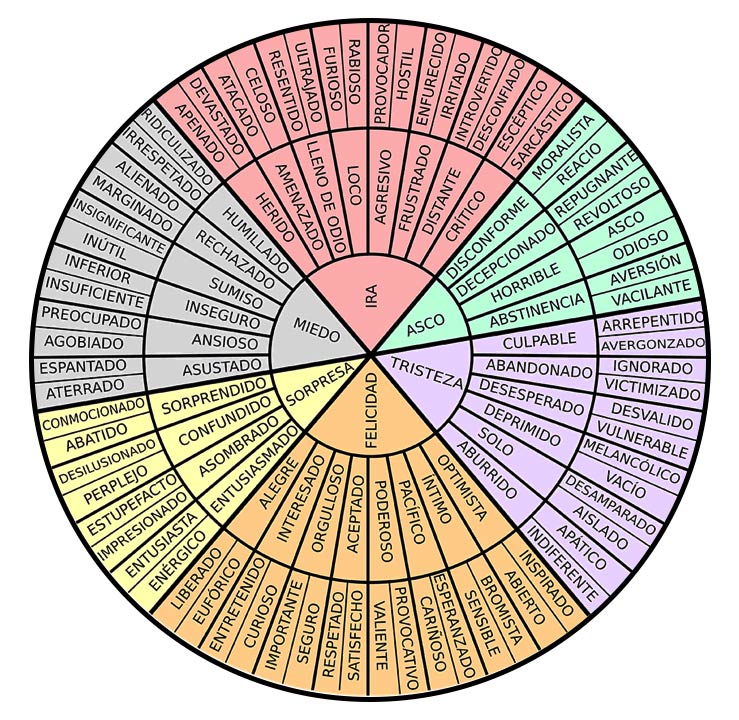
The Circle of emotions is a very useful tool to identify and name emotions. This circle is composed by the name of different emotions, which are categorized into basic emotions, in the inner part of the circle, and more specific and complex emotions, in the outer part of the circle.
The Circle of emotions provides rich and precise vocabulary to identify and name emotions. Sometimes it is necessary to go deeper into the meaning of the more complex emotions to learn to differentiate between similar but different emotions within the same emotional category (for example, differences between being apathetic or indifferent).
Along with naming and describing emotions, it is also very important to identify where in the body this emotion is located and how it feels (e.g., "when I feel angry I feel my forehead shrink and I feel pressure in my head and my chest"; "when I feel scared I feel it in the pit of my stomach"). Locating the emotion in the body helps in the process of identifying the emotions.
In addition, it is important to investigate the thoughts and behaviors associated with emotions, so that we understand the cause of our emotions and how they influence our thoughts and behavior, and vice versa.
Periodic table of human emotions
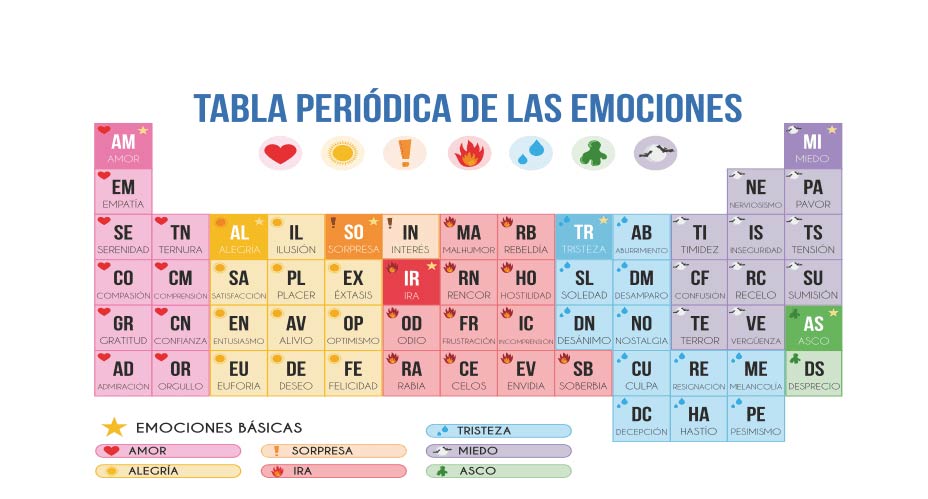
The Periodic table of human emotions is a tool similar to the circle of emotions, which has the same goal: identifying and naming emotions. In this case, we also find different emotional categories, which in turn are divided into more specific emotions.
This tool is recommended when the abilities to identify and name emotions are somewhat limited. If that is the case, it may be more useful to start by using the periodic table instead of the circle of emotions, because it contains fewer emotions, and these are less complex than those found in the circle.
As we did with the circle of emotions, part of the process of identifying and naming emotions involves locating the emotion in the body, and exploring the thoughts and behaviors associated with the emotion.
Book “Emocionario” by Cristina Núñez (only available in Spanish)
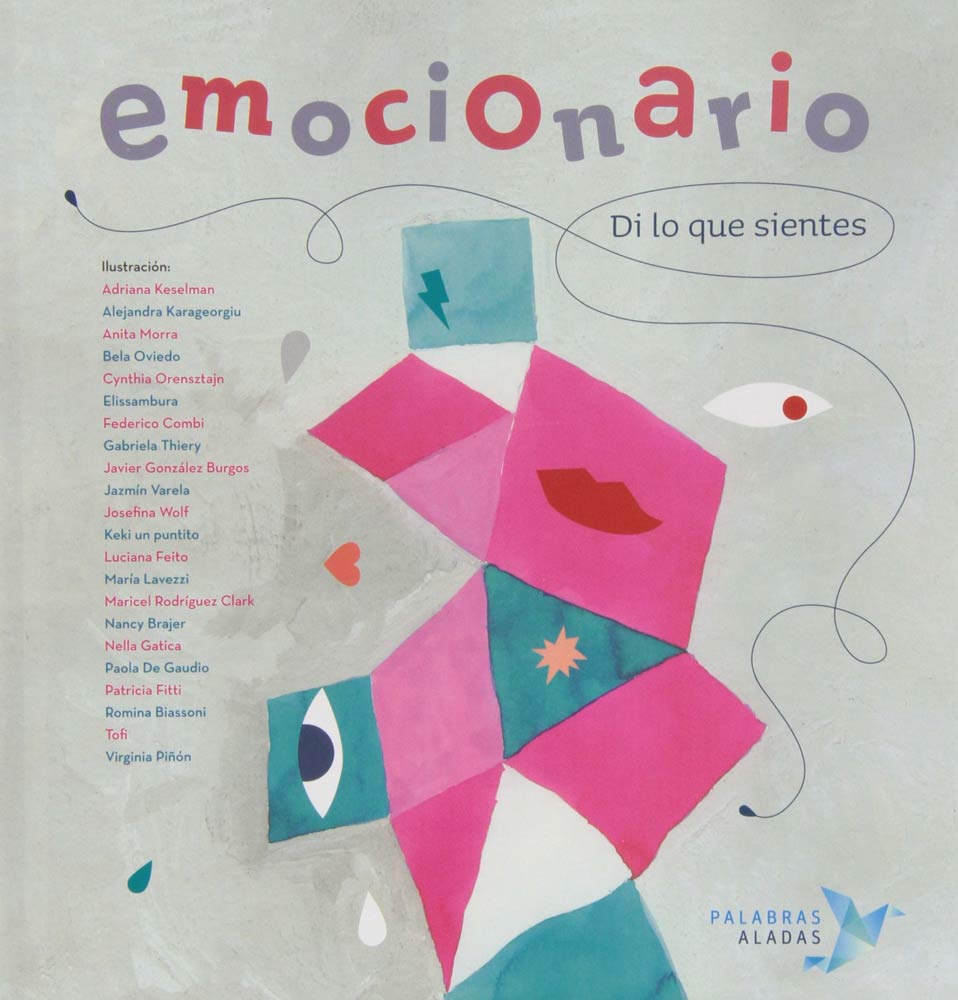
The Emocionario is a book that contains the description and graphic representation of a great variety of emotions and feelings. This book can be considered an emotional dictionary.
It is a very useful book to learn how to identify emotions adequately, since not only describes the different emotional states, but also helps to distinguish between them by showing how some emotions are related to others and explaining the possible causes of emotions.
This book is mainly targeted towards children. However, it is also a very useful resource for adults who have difficulties identifying their emotions. Therefore, this book is highly recommended for anyone involved in children's education (e.g., parents, teachers, etc.), and for adults who want to deepen and improve their emotional skills.
The simplicity and concreteness with which the different emotions are described makes this book a great tool for identifying and expressing emotions, both in and outside therapy.
Books “El laberinto del alma – The Labyrinth of the Soul ” and “Diario de emociones – Emotion’s diary” by Anna Llenas (only available in Spanish)
El Laberinto del Alma – The Labyrinth of the Soul is another reference book for identifying emotions and feelings. This book, like the Emocionario, is also considered an emotional dictionary, but unlike this one, El Laberinto del Alma is aimed at adults and adolescents, as it describes feelings of greater emotional complexity (for example: bonding, empathy, abandonment, toxicity, emotional blindness, etc.).
Especially interesting are the graphic representations accompanying the description of each of the emotions/feelings presented in the book, since they capture in a very precise way the essence of the emotion described.
The graphic representation of emotions is a very important resource to help develop the skills to identify and express emotions, because on many occasions, images are more powerful when it comes to transmitting what the person is feeling, than just identifying and naming the emotion.
Precisely, it is the graphic representation of emotions what is targeted in the book Diario de emociones – Emotion’s diary. This book is composed of different exercises to identify and express emotional states. Among them we can find exercises to connect with different emotions and draw them (e.g., "listen to a sad song and let yourself go" expressing graphically how it makes you feel); exercises to locate the emotion in the body and color it with the color that represents that emotion for us; exercises to express of our fears; etc.
The emotional expression through drawings, images, and colors besides facilitating the identification of emotions is also a therapeutic tool of great value in the process of managing and channeling emotions. Therefore, Diario de emociones is a highly recommended book to explore our emotional world and our way of expressing how we feel.
Dixit cards
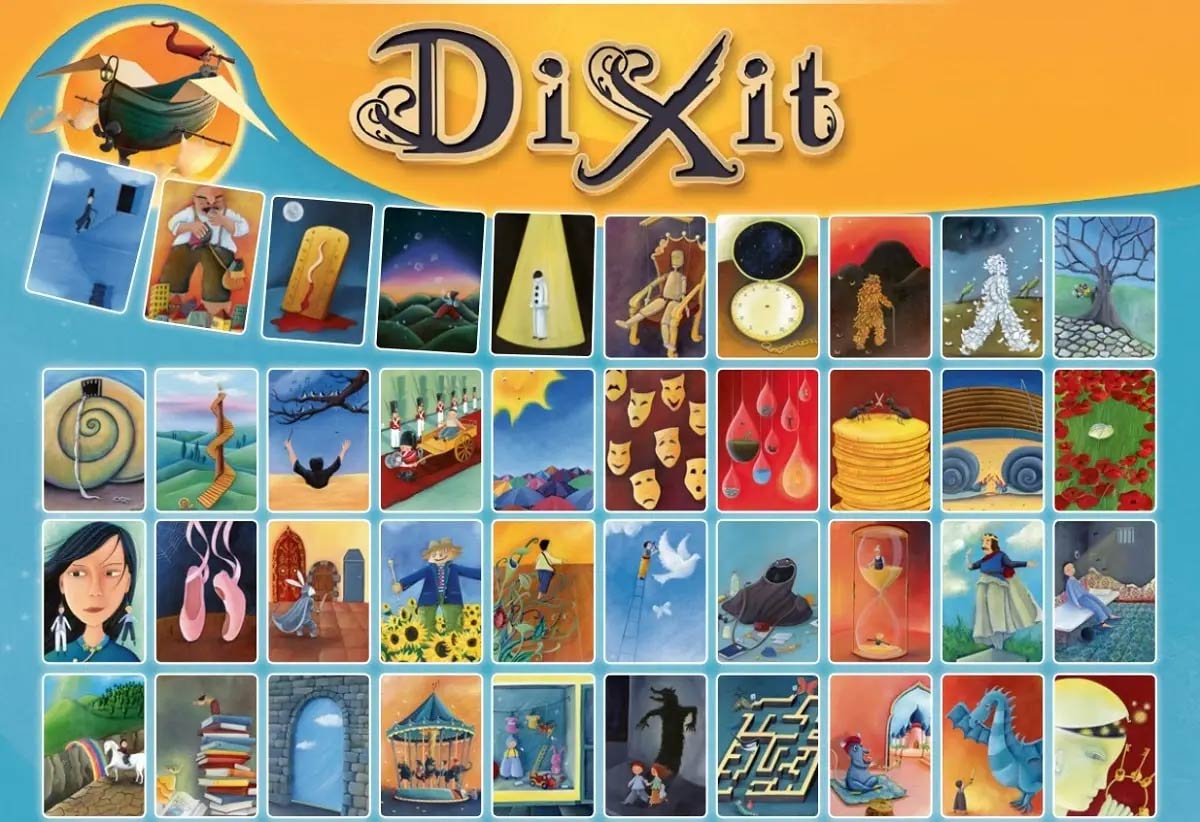
The phrase "A picture is worth a thousand words" is especially applicable in the case of the expression of emotions, as sometimes pictures can capture the emotional world much more accurately than words themselves.
Sometimes it is difficult to put into words what we are feeling, because we may not know what we are feeling, or we may not have precise vocabulary to describe the complexity of our emotional world. For this reason, the cards of the board game Dixit can be a great resource to help develop or improve the skills to identify and express emotions.
These cards are composed of a great variety of images, which besides having great aesthetic value, are very symbolic and have lots of details, so they are very useful to represent the variety and complexity of emotional states, including representing the thoughts associated with those emotions.
Obviously, the meaning that each person attributes to each image is subjective; that is, an image can represent one emotion or emotions for one person and represent different emotions for another. That is why it is very important to use this tool so that the person can explain what it means to him or her. It is especially important that in this process we explore thoughts and behaviors associated with the images of the cards.
It is highly recommended to combine the Dixit cards with the circle of emotions or the periodic table of human emotions, so that the images represented in the cards are paired with the name of emotions.
Therefore, the use of Dixit cards is especially useful for people who have difficulty identifying emotions or for those who only have the ability to differentiate between basic emotions.
Drawings, collages and play dough
Other resources to help in the process of identifying and expressing emotions can be drawings, collages or the representation of emotions with play dough. These resources are very interesting as a means of shaping and externalizing the emotional world, and as a means of managing and channeling emotions.
The combined use of graphic representations with other resources for naming emotions, such as the circle of emotions or dictionaries of emotions, can be of great help to improve the abilities to identify and express emotions. As with other tools, it is very important to explore thoughts and behaviors associated with emotions, and to identify the part of the body where they are located.
The tools and resources described can be used by therapists and other professionals (teachers, educators, etc.), as well as by anyone who wants to improve their skills to identify and express their emotions.
When working with the emotional world, it is very important to be creative and have a variety of tools that facilitate the process of identification and expression of emotions, with adults as well as with children, and of course, always adapting the resources to the level of emotional development that the person presents.
Division of Psychology, Psychotherapy and Coaching
Psychologist
Adults
Languages: English and Spanish

